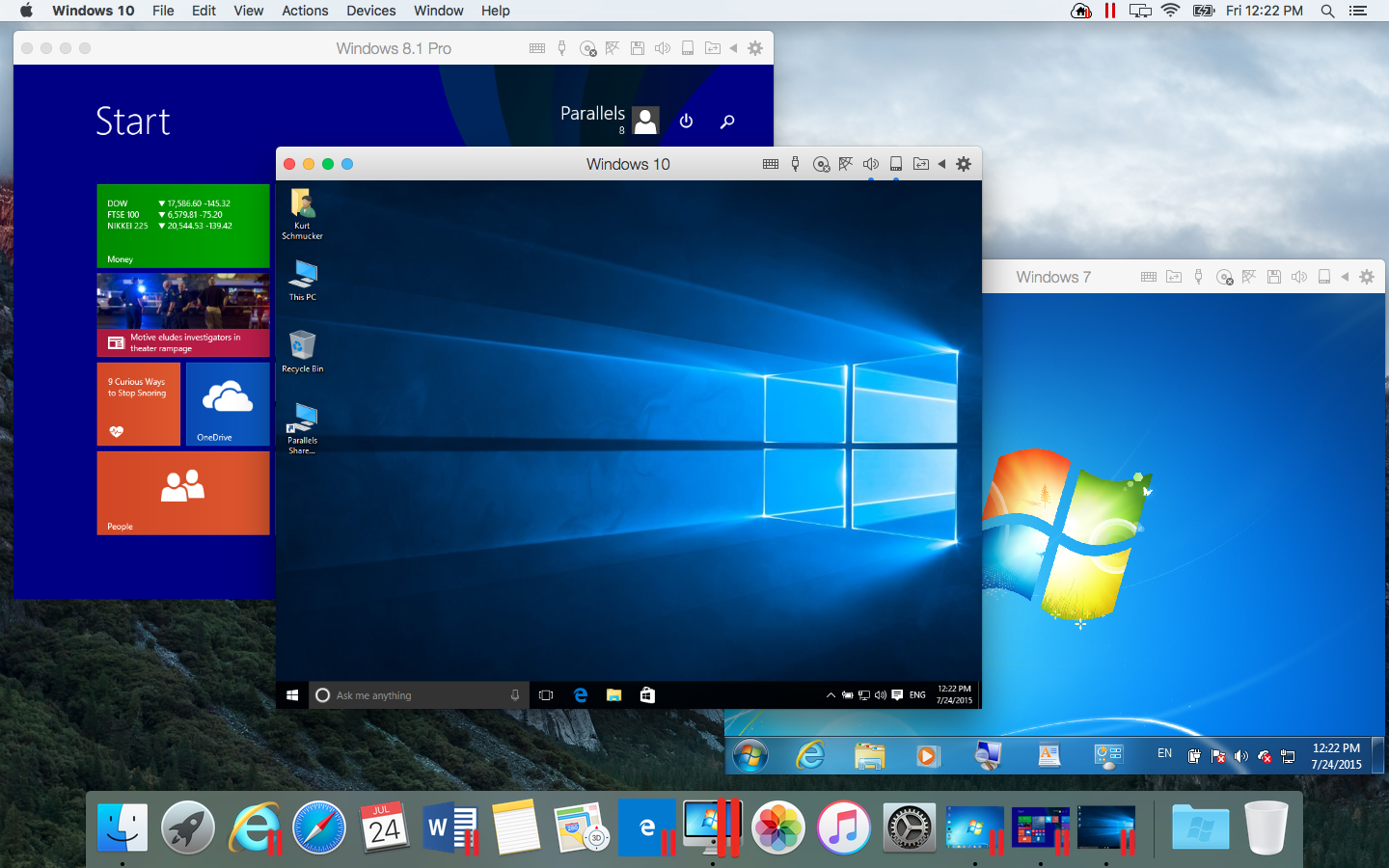reader comments
 41 with 31 posters participating
41 with 31 posters participatingA new version of Mac-based virtualization software Parallels Desktop was released today. Parallels Desktop 14 offers disk space efficiency improvements, faster application-launch speeds, macOS Mojave support, expanded Touch Bar support, better OpenGL graphics performance, and several other improvements.
Most people who use Parallels use it to run Windows within macOS, and the updates focus on that by improving performance and adding new features to make the two operating systems work more seamlessly together.Jun 11, 2018 I've the new macOS 10.14 running on my machine in parallels VM. Hello Nicholas1, if you purchase a Parallels Desktop for Mac Standard Edition subscription or a Pro Edition subscription - you will be entitled to upgrades to new versions at no charge whenever these become available.
The key feature the Parallels team is pushing for this release is storage optimization. Virtual machines can take up a lot of space, and that can be a problem when you're working with limited solid-state storage in modern MacBooks. This release claims to free up significant disk space in most (but not all) cases—up to 20GB in some situations. There's also a 'Free Up Disk Space' feature that will, in some cases, make it easier to pinpoint where you can achieve some savings. Some of the general space savings come from more efficient compression for states saved with the Snapshots feature.
Parallels Desktop 14 also brings improved graphics performance in certain Windows applications, using the multi-platform OpenGL graphics API. Of course, Apple announced at its developer conference in June that OpenGL will be deprecated in macOS, with Apple's own Metal graphics API the only supported path going forward. When we asked a Parallels developer about this, he told us that OpenGL still works for the immediately foreseeable future but that the Parallels team is working on future solutions involving Metal.
Last year, Parallels added Touch Bar support for Windows applications. That is greatly expanded in Parallels Desktop 14. New applications are now supported out of the box, including:
- Microsoft Visio and OneNote
- SketchUp
- AutoCAD
- Revit
- Quicken
- QuickBooks
- Visual Studio
Parallels includes a tool for creating custom Touch Bar layouts for Windows applications that are not already supported; this release makes that particularly powerful with an XML authoring feature.
Other features include shared camera support for cameras with up to 4K resolution, Microsoft Ink support for Microsoft Office with pressure-sensitivity support in some applications, faster boot times and application launch speeds, faster suspend operations on APFS partitions, significantly improved performance on the iMac Pro with AVX-512, and small UX improvements like progress bars in the dock for Windows applications.

Parallels Desktop 14 is available now with an annual subscription starting at $79.99 or a perpetual license at $99.99. The Pro and Business editions will set you back a bit more, though—$99.99 per year.
reader comments
with 0 posters participatingIntroduction
Parallels Desktop 1.0 for Mac OS X
Developer: Parallels (product page)
System requirements: Any Mac with an Intel CPU, Mac OS X 10.4.6, 512MB of RAM, 30MB free drive space
Price: US$79.99 (US$49.99 through July 15)
Move over emulation, virtualization is in and it's hotter than two Jessica Albas wresting the devil himself in a pit of molten steel. It's no contest, virtualization has it all: multiple operating systems running on the same machine at nearly the full speed of the host's processor with each system seamlessly networking with the next. Add to that the fact that it's cheaper than getting a new machine and you have the guaranteed latest craze. Not even the Hula Hoop can stop this one.
Okay, virtualization isn't totally new–it's just new to Macs and Parallels Desktop is the first out the door with a 1.0 product for Mactels. For those that are just getting to the party, here's a bit of a breakdown on virtualization. The idea is that program acts as a virtual machine (VM) and its job is to bethe PC (one of the more boring drama classes), tricking the client OS into thinking it's inside a real x86 machine with a physical hard drive, keyboard, Ethernet card, etc., when in reality, it's merely grabbing unused CPU cycles and RAM inside another OS to do it's thing.
The benefits are pretty clear over a real PC: It's running on the Mac you know and love but you're not sacrificing access to the occasional Windows-only app that you might need. Maybe you have a copy of Office XP for Windows and don't want to shell out for the Mac version. Sure, you could load up Apple's Boot Camp, but using a program like Parallels–or its competitors VMWare, WINE and MS' Virtual PC–means you don't have to reboot just to use that accounting program at work.
It is a great prospect and now even Apple is recommending running Parallels on their Get A Mac site:
That's the corporate equivalent of Jesus endorsing your sandals. Click for high res.
When that page went up, the price of Parallels not-so-coincidentally went up from $50 to $80, so let this be a lesson to us all: never say 'wow, that's so cheap' on a public forum again. Still, that's still cheaper than the $129 charges for the Virtual PC standalone package and if it works as advertised, it's hard to compare the two. Parallels promises to be a big upgrade from the pokey and painful Virtual PC emulation. So let's see if it's the cheap and fast hydra PC we've all been waiting for.
Minimum requirements
- Any Intel Mac (doesn't require a machine with VT-x support)
- A minimum of 512 MB of RAM, 1 GB recommended
- 30 MB of available HD space for Parallels plus enough room for the VM OS
- OS X 10.4.6
Test Hardware
- MacBook Pro 2.0
- 2 GB RAM
- OS X 10.4.6 / 10.4.7 (both tested)
Parallels For Mac 10.9
Download the PDF
(This feature for Premier subscribers only.)